Technologies
Google Pixel Tablet Review: Android Tablets Are Back
Google’s fast tablet is also a dockable home hub. Will Google commit to its tablet vision this time?
The world of Android tablets has been a weirdly up-and-down ride for the last decade or so. I remember Google’s fantastic little 7-inch Nexus tablet back in 2012. And Google’s considerably less successful Chromebook-meets-Android Pixel Slate, a sort of touchscreen laptop/tablet hybrid. That was Google’s previous tablet hardware entry.
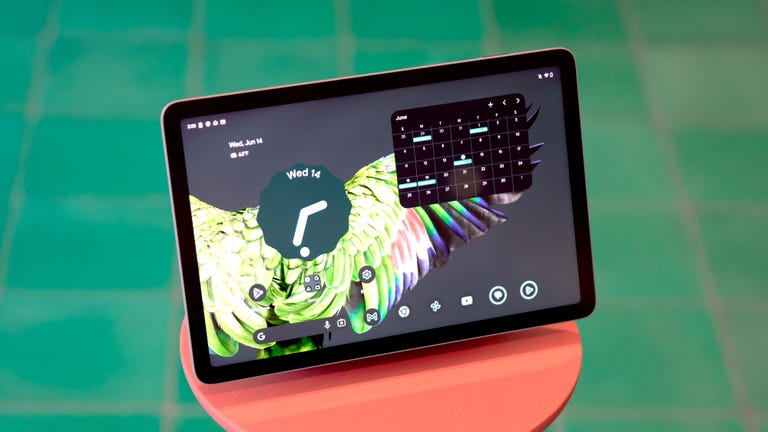
06:35
The Pixel Tablet is a return to Android tablets for Google. But its competition never strayed. Samsung’s ongoing tablet series, for instance, and Amazon’s Fire tablets (which can sideload the Google Play store and are very affordable). Google’s new Pixel Tablet is hopefully a return to excellent Android tablet software and features, too: The $500 Pixel Tablet feels like a really good iPad alternative for Google ecosystem people. Google also took a unique approach by making it a dockable home hub, something Apple should steal someday for its iPad lineup.
Google Pixel Tablet
Like
- Fast processor
- Included speaker dock sounds great
- Good front video camera
Don’t like
- Price ramps up for cases and more storage
- No keyboard or stylus case options
There are only two gripes I have: this Pixel Tablet, while fast-performing and really nicely built, doesn’t have a Google keyboard case at launch, nor any stylus option. This is more of a sharable tablet for the home and family than a get-work-done tablet, although you could absolutely bring your own accessories and make it what you want.
At $500, this Pixel isn’t a budget tablet and if you want to add more storage beyond the base model’s 128GB, the 256GB version is $100 more. Add another $80 for Google’s Pixel Tablet protective case. It’s a more expensive package than Apple’s entry-level iPad. But, if you’re looking for a more premium Android tablet for families than Amazon’s Fire options or Samsung’s Tab A-series, this looks like the best bet.
Read more: Best Android Tablets of 2023
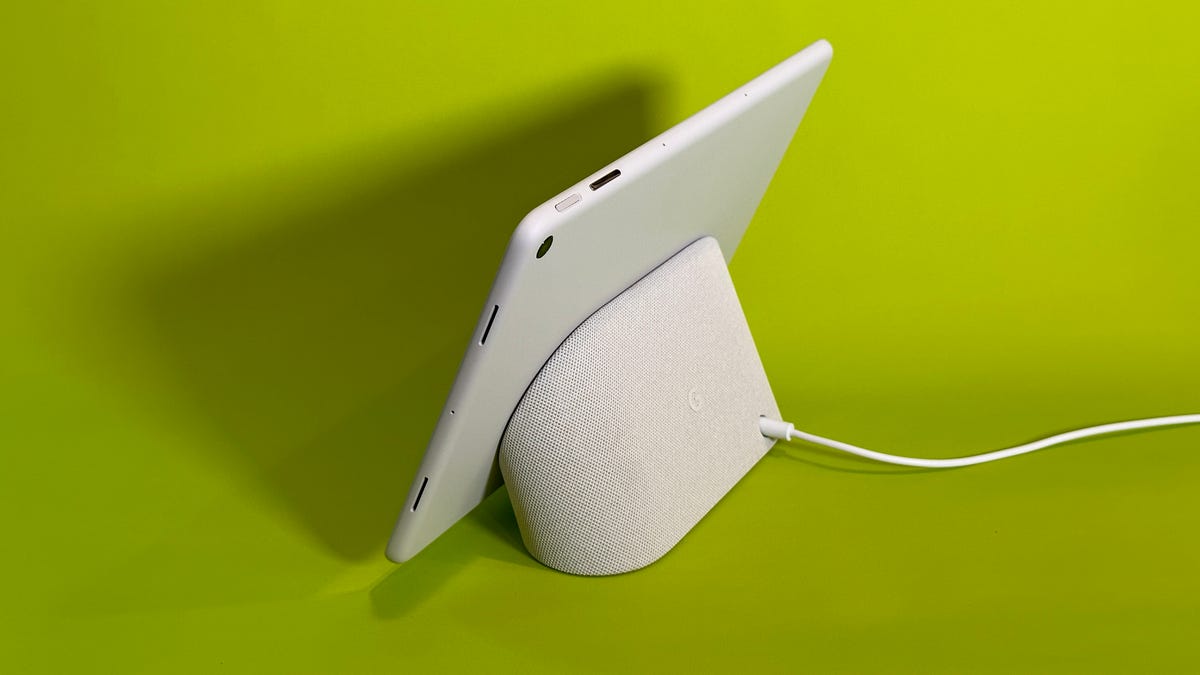
The tablet snaps into its charge dock, which doubles as a speaker.
Design: Clean and comfy
Google’s Pixel Tablet has an iPad-like feel, with a nearly 11-inch display and a smooth aluminum case. At a bit over a pound, it’s comfortable enough to hold but leans toward the heavier side with its case on.
The screen resolution — 2,560×1,600 pixels — gives you a crisp picture, and bright, too. The side speakers are good enough on their own but not as great as what the speaker dock provides (as you might expect).
There’s no headphone jack, so you’ll need USB-C headphones or an adapter, or go Bluetooth. There is a fast-acting fingerprint sensor in the power button that unlocks the Pixel Tablet as fast as a Pixel phone. Overall, it’s what I’d want from a tablet, and it looks really good when docked. The whole design ends up feeling like a larger Google Nest Hub, or a smart picture frame.
Google’s expensive case (there are also less-expensive third-party options) is pretty great, too, with a soft finish and protective edges, and a metal, ringlike kickstand that adjusts to any angle and still docks in the speaker hub. It’s not a keyboard case, but you could add your own Bluetooth keyboard for desk typing.
The dock is great
Google includes a dock the Pixel Tablet magnetically attaches to that charges and acts as a stand so that the tablet can be a home picture frame, or smart home interface, or a connected speaker/display with YouTube benefits or whatever else you might need. The speaker-equipped dock has a fabric covering much like Google’s other home products and is small enough to pack easily for travel. Its speakers sound boomy for playing music indoors, too.
Snapping the tablet on and off the dock is relatively easy, although sometimes it’s a little hard to locate the magnetic pins, and pulling the tablet off the dock can sometimes result in pulling the lightweight dock with it. The dock charge plug and cable are also proprietary, not USB-C. The Pixel Tablet does have a USB-C port for charging, but you’ll need that specific dock cable to plug it into your home, and the cable length isn’t exactly long.
The Pixel Tablet supports casting audio from another device to the tablet when it’s connected, but the speaker dock won’t work when the Tablet isn’t mounted on it and has no Bluetooth. That’s a bit of a bummer if someone wants to use the speaker while someone else uses the tablet.
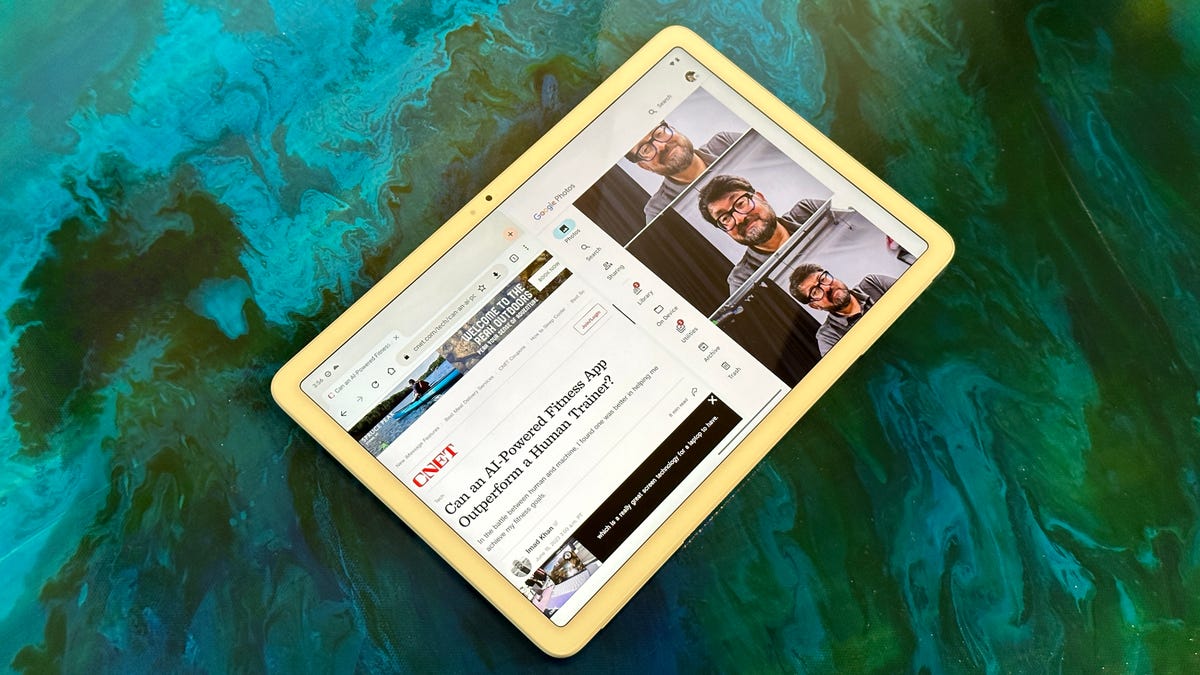
Split-screen multitasking is just fine on this tablet, and a bunch of apps already support it.
Performance and software: Speedy and improved, mostly
The Google Tensor G2 chip, similar to what’s on the most recent Pixel phones, is zippy in the tablet and generally runs well. There were a few moments where apps seemed to glitch a bit in split-screen multitasking, but that could also be due to this being a prerelease device running early software.
Google’s renewed attention to tablet software shows, with multitasking that feels like Apple’s iPadOS; apps can be easily dragged up from an app taskbar into another window, and two apps at once can be adjusted to fit on a few preset-size settings. Google’s also added a series of widgets that help customize information, which I sometimes found useful and at other times thought weren’t flexible enough.
Videos from another app, like YouTube, can pop up and hover in a small window over these split windows, too. It feels great to work in these modes, although not all apps work for the Pixel Tablet yet. Google focused on optimizing a bunch of popular apps and also its own core apps first, but hopefully more will come. There are also some Google Play apps that don’t run at all yet on Pixel Tablet, including Geekbench, which we use for testing tablets for performance comparisons.
The Tensor G2 pulls off some tricks Google has on its Pixel phones, too, notably Magic Eraser in the Photos app, which removes people or objects from shots. Dictation also works really well: I could see myself voice-typing a lot with the Pixel Tablet, even if I still miss a dedicated keyboard case (hint, hint). Google’s on-screen keyboard is fine, but I didn’t fall in love with it. I also found that a few multifinger swipe gestures got a little weird at times in apps like Google Earth. Some two-finger swipes and pinches, for instance, were not always recognized, but maybe a future software update can address that.
Nice camera
The front-facing 8-megapixel camera looked good for selfies and video chat, and looked sharper than my normal laptop-video-chat expectations. Google placed its camera on the long edge where it should be, much like Apple’s most recent 10th-gen iPad. It means this tablet can be used easily for video chat when docked. But, a subject-tracking, autoframing feature didn’t seem to work on my review unit, and video quality looked better for the moment with Google Meet than in Zoom.
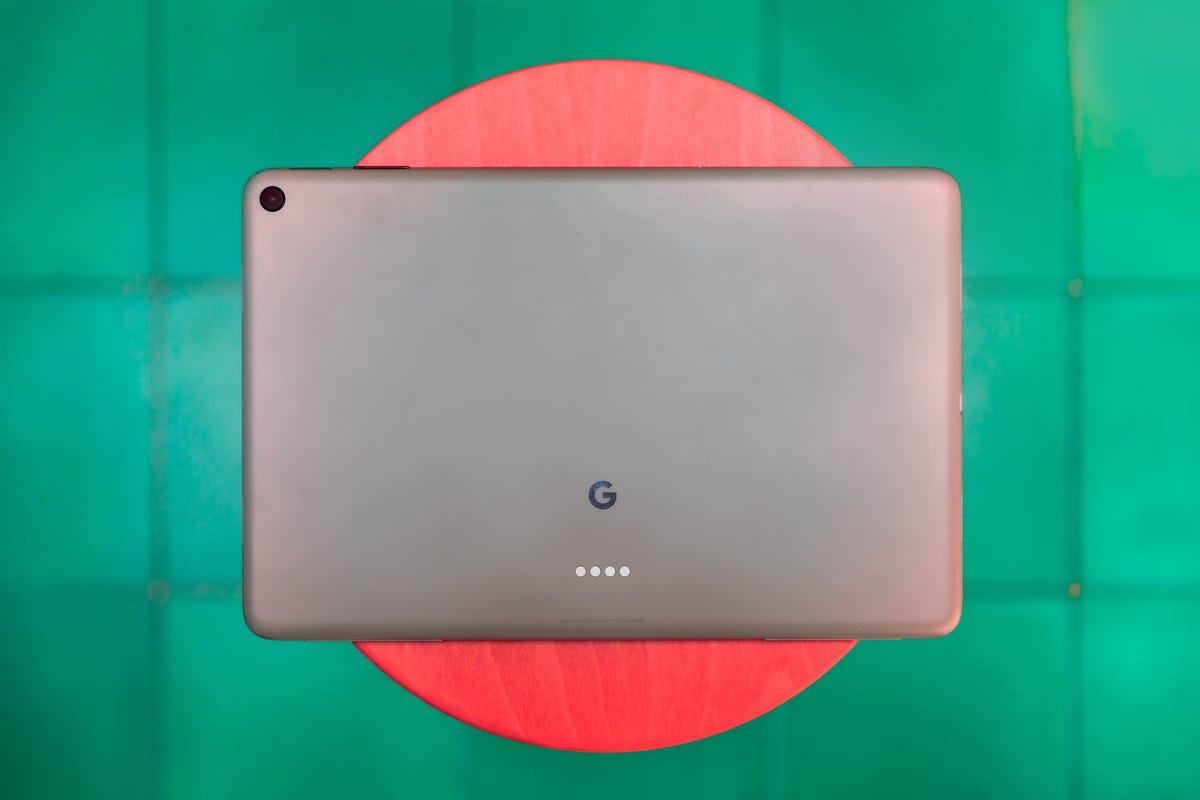
Google makes extra accounts pretty easy
One other advantage of Google tablets over iPads is account-swapping. Much like a Chromebook, you can add extra accounts and switch over to others easily enough here, even entering a guest mode or a kid mode. This underlines the family-sharing concept that’s at this tablet’s core, and I like it. I could easily see the Pixel Tablet being a casual grab-a-tablet option in a living room where someone could just pick it up as needed and check a few things, watch a video or play a game.
I miss Google’s work focus on the Slate, though
I miss some of the ideas Google was going for on its previous Slate tablet, which was more of a Chromebook with Android benefits. The Pixel Slate made a keyboard and trackpad one of its big included features. This time, the Android-focused Pixel Tablet has gone the other way, toward a sharable, video-and-game-playing, app-browsing tablet, but without any great ideas for how to add a keyboard or access to ChromeOS-type features in a new, helpful way. Anyone who wants a Chromebook will still want to get a Chromebook — or a laptop. You could add a keyboard here, or a stylus, but your mileage won’t be any different than on another Android tablet. Plus, with other options from Samsung, OnePlus and Amazon, keyboard accessories are already there — or even included.

There’s a USB-C port on the Pixel Tablet, even though the dock charges with its own proprietary plug and pin connector.
Yes, it could be a home hub, too
I didn’t test the smart home features of this tablet, but you can connect Google Home devices and services just like you’d do on a Nest Hub. That’s the Pixel Tablet’s greatest success as a device, and where Google pivoted this time with its design. Voice response via its microphones was fast, and I was able to play music, ask questions, play audiobooks and launch YouTube videos quickly with voice commands. Once my kids realized this thing could play videos, they gathered around it like a small TV. It could be a great kitchen option, especially since the tablet hovers when in the dock (avoiding contact with counter surfaces). The dock angle won’t adjust beyond its slightly elevated angle, but I found it easy enough to glance at when on a table or counter.
A great start for Google’s return to tablets
Don’t stop, Google: Keep building off the Pixel Tablet, add a keyboard case, and maybe lower the price a bit (with a case and the 256GB storage option, which costs an extra $100, you’re suddenly pushing towards $700). But this is the Google tablet you’re probably looking for, despite the price. The only question is whether Google commits to its software and performance over time. Google tends to suddenly change focus on product lines, especially its tablets. But the Pixel Tablet is a great addition to its device lineup and a perfect nonphone option. Keep it around, please.
Technologies
Claude Can Now Spin Up Spreadsheets, Reports and Slide Decks Directly in Chat
The latest feature is currently in preview for Claude Max, Team and Enterprise customers.
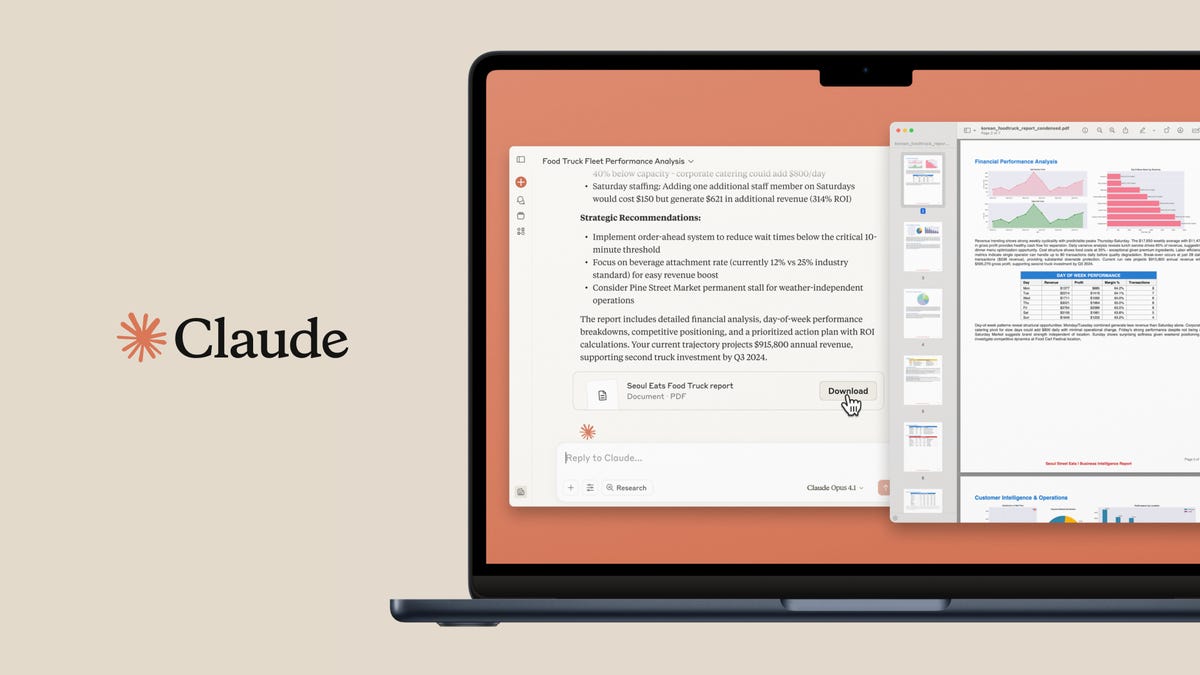
Anthropic is pushing Claude further beyond text-based answers. The AI chatbot can now generate and edit files, including Excel spreadsheets, Word documents, PowerPoint slide decks and PDFs, directly inside Claude.ai and its desktop app. This update will allow Claude to deliver finished, professional files instead of just copy-pasted text.
The feature is currently in preview for Claude Max, Team and Enterprise customers. Pro users will get access in the coming weeks.
Read also: Claude AI Can Now End Conversations It Deems Harmful or Abusive
What this update brings to Claude
Users can now drop in raw data and get back a spreadsheet with formulas, charts and a written summary. Meeting notes can become a polished report or slide presentation. Claude can transform data into slides or a stack of invoices into a spreadsheet. Claude can reportedly build complex assets like financial models or project trackers from scratch, too.
The new functionality is powered by a secure computing environment that lets Claude write code and run programs in the background to assemble files. Anthropic positions the update as a way to shorten the distance between ideas and deliverables. Instead of spending hours cleaning data or formatting documents, customers would use Claude to handle the execution while they focus on strategy and decision-making.
Don’t use sensitive data
There’s an important caveat. Claude connects to the internet while creating and analyzing files, so companies and employees should be cautious about feeding the AI platform sensitive data.
How to get started with Claude’s new file creation feature
- Turn on «Upgraded file creation and analysis» in Settings > Features > Experimental.
- Upload the files you want Claude to work with or describe your request in the chat.
- Collaborate with Claude by giving instructions and refining the output step-by-step.
You can download the results from there or push them straight into Google Drive.
Read also: Claude for Chrome Extension Bakes AI Right Into the Browser
Technologies
Retro Games Fan? Atari’s $180 Gamestation Go Is Up for Preorder
The company says the console will include 200 games and lots of ways to control them.
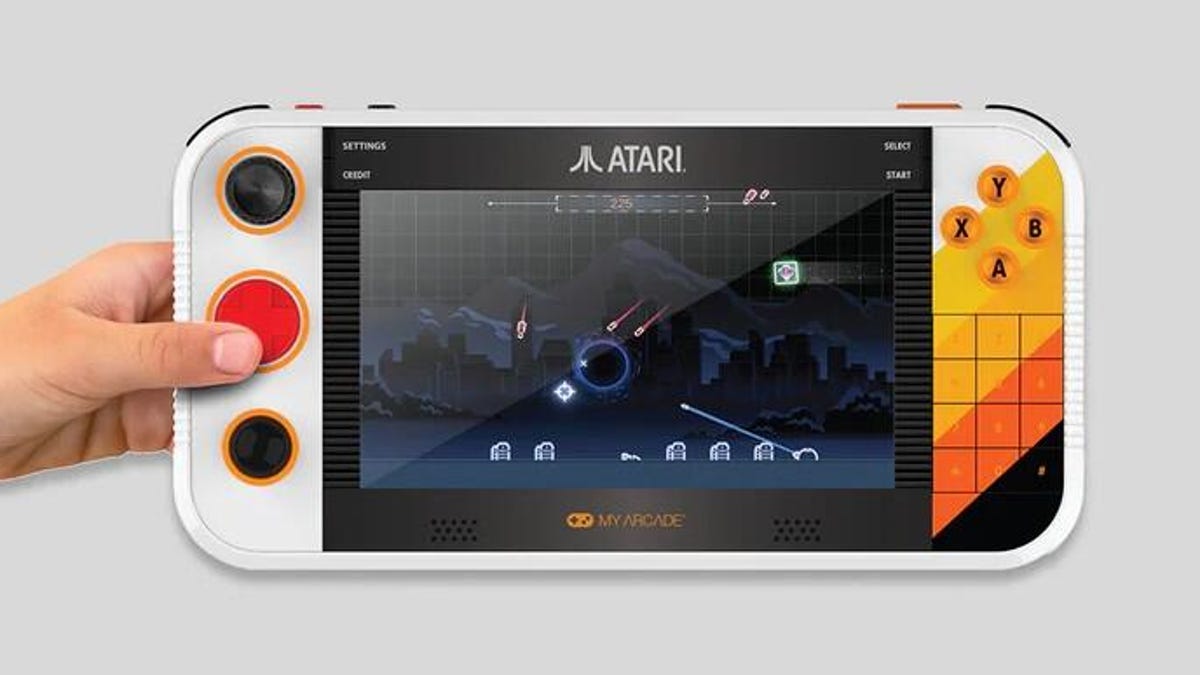
The venerable video game company Atari is offering preorders for a new game console it previewed earlier this year: The Gamestation Go will release in October for $180 (plus $8 shipping).
On its website, Atari shows off a colorful portable device with a 7-inch screen and multiple ways to control games including trackpads, a trackball and even a numeric keypad. Atari says the console will come bundled with 200 built-in games including Pac-Man, Centipede, Asteroids and Balls of Steel. It includes Wi-Fi connectivity, USB-C ports and a battery life of about 4 to 5 hours, according to the site.
The site also touts «SmartGlow» technology that lights up the section of controller to be used, depending on the game.
This isn’t the first time Atari has packaged up its retro library of games in a way to make them accessible to new audiences. In the last few years, Atari has released throwback versions of its Atari 2600 and Atari 7800 consoles. But the Gamestation is the first Atari mobile console with those games bundled in.
The console has an HDMI port that allows it to be connected to larger screens too.
Technologies
These 18 Popular VPNs Share Parent Companies and Privacy Risks
A new study found several popular VPNs are secretly connected through shared ownership, highlighting the importance of understanding who is behind your chosen VPN.

The benefits of using a VPN service to protect your privacy are clear: Your ISP and other snoops won’t be able to spy on your online activity. What’s not always clear is which VPN service is trustworthy.
A VPN, or virtual private network, is software that creates a secure connection between your device and the internet by routing your internet traffic through an encrypted tunnel to a remote server. A VPN essentially masks your IP address and helps keep some of your browsing activities private. Recently, three university researchers have discovered that 18 of the most widely used VPNs on the Google Play store have shared infrastructures with serious security flaws that could expose customers’ browsing activity and leave it vulnerable to decryption. These VPNs are among the top 100 most popular on the Google Play Store, comprising more than 700 million downloads.
Read more: Best VPN Service for 2025: Our Top Picks in a Tight Race
The peer-reviewed study by the Privacy Enhancing Technologies Symposium found that these VPNs, despite calling themselves independent businesses, are actually grouped into three separate families of companies.
None of CNET’s recommended VPNs — ExpressVPN, NordVPN, Surfshark, Proton VPN and Mullvad — are on the list. (If you currently don’t have a VPN, here’s why you might want to start using one.)
According to the findings, these are the three groups that contain the 18 VPNs:
- Family A: Turbo VPN, Turbo VPN Lite, VPN Monster, VPN Proxy Master, VPN Proxy Master Lite, Robot VPN, Snap VPN and SuperNet VPN
- Family B: Global VPN, Inf VPN, Melon VPN, Super Z VPN, Touch VPN, VPN ProMaster, XY VPN and 3X VPN
- Family C: X-VPN and Fast Potato VPN
Researchers determined that the VPNs in Family A are shared between three providers linked to Qihoo 360, a firm identified by the US Department of Defense as a Chinese military company. The VPNs in Family B use the same IP addresses from the same hosting company.
Know your VPN’s parent company
It’s a cautionary tale about why it’s important to know who’s behind the VPN you’re using, says CNET senior writer Attila Tomaschek.
«It’s also crucial to know what kinds of data the VPN provider is sharing with its parent company and affiliated entities,» Tomaschek said. «Some of these companies may even be compelled to log customer activity and share it with authorities, depending on the jurisdiction in which they operate.»
Ashwin Vamshi, Head of Research & Detection Engineering for Cyble, said many of these shady VPNs are actually profiting off customer data. «Marketed as ‘free’ and promising ‘total anonymity,’ many of these services generate revenue by collecting, logging, and selling user data,» he told CNET. «In most of these cases, the consumer data become the product revenue stream placing privacy and security at significant risk.»
Despite the warnings, Tomaschek says it’s not so easy to figure out who controls your VPN. But he says there are measures that customers can take.
«Users can do a few things to help ensure the VPN they’re using is reputable,» Tomaschek says. «Check the privacy policy — specifically for terms like ‘logging,’ ‘data sharing’ or ‘data collection.’ A Google search of the provider can help determine whether the VPN has been involved in questionable activity. Read detailed, unbiased reviews from reputable sources. Be especially wary of signing on with a free VPN, even if it’s listed as a top choice in your app store.»
Vamshi says individuals and businesses need to be wary of VPNs don’t have «independent audits, privacy and transparency policies.» He recommends instead:
- Trusted, paid VPN providers that enforce strict no-logging commitments and undergo regular compliance reviews.
- Zero Trust / SASE solutions that deliver secure and identity-driven access.
The PETS researchers examined the most downloaded VPNs on Android, looking for overlaps among business paperwork, web presence and codebase. After identifying code similarities, they were able to group the 18 VPNs into three groups. The study was initially spurred by VPN Pro’s own findings, «Who owns your VPN? 105 VPNs run by just 24 companies.»
CNET’s Tomaschek has advice for anyone who has been using one of these 18 VPNs.
«I’d recommend deleting it from your device immediately,» he said. «If you suspect that any sensitive personal data may have been compromised, it’s a good idea to keep an eye on your credit report and look into services like dark web monitoring or identity theft protection.»
-

 Technologies3 года ago
Technologies3 года agoTech Companies Need to Be Held Accountable for Security, Experts Say
-

 Technologies3 года ago
Technologies3 года agoBest Handheld Game Console in 2023
-

 Technologies3 года ago
Technologies3 года agoTighten Up Your VR Game With the Best Head Straps for Quest 2
-

 Technologies4 года ago
Technologies4 года agoVerum, Wickr and Threema: next generation secured messengers
-

 Technologies4 года ago
Technologies4 года agoGoogle to require vaccinations as Silicon Valley rethinks return-to-office policies
-

 Technologies4 года ago
Technologies4 года agoBlack Friday 2021: The best deals on TVs, headphones, kitchenware, and more
-

 Technologies4 года ago
Technologies4 года agoOlivia Harlan Dekker for Verum Messenger
-

 Technologies4 года ago
Technologies4 года agoiPhone 13 event: How to watch Apple’s big announcement tomorrow
